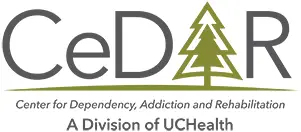TREATMENT AND CARE
An essential ingredient of strong addiction treatment is drug and alcohol testing. Time frame of interest, levels of precision, and cost considerations can determine the forms and specific style of test used. Here are the common drug and alcohol tests used to increase accountability in addiction treatment.
Urine Drug Screen – Point of Care Test
If someone submits a urine specimen as part of an office visit, and this test shows immediate results, it likely is a point of care screen. We regularly use this test for being cost-effective, useful in motivational therapy work, and efficient.
Because this test is only a screen, it cannot absolutely determine if someone is positive or negative for a certain substance. There are situations in which the test will report a positive result, but the person disputes this result as inaccurate. In such a case, the test may be sent to a larger laboratory for confirmatory testing.
- Good For – rapid results, cost considerations, therapeutic and motivational value
- Limitations – false positives, potential clinic issues with observed urine screens
Urine Drug – Confirmatory Test
A confirmatory test uses the same urine specimen as a point of care test, but requires advanced lab equipment to determine with high precision what is present or absent from the sample. This test resolves a dispute from a point of care test.
A confirmatory test can search for drug molecules not often included in typical drug screens, such as specific opioid compounds, different benzodiazepines, anabolic steroids, or kratom, to name only a few. In fact, the available tests in this category can include hundreds of available molecules.
The downside to confirmatory testing is cost, as these tests will often cost hundreds of dollars, as compared to only a few dollars for a point of care test. This test also takes multiple days to produce results, hence may not be as useful for regular office therapy.
- Good For – highly accurate results, legal and workplace verification
- Limitations – costly, delayed results
Ethyl Glucuronide (EtG)
EtG is a common addition to urine screen tests, as it is useful to determine if a person has consumed alcohol in recent days. In fact, this test will show positive for consumed alcohol within about 80 hours of a person’s last drink.
For someone required to undergo legal monitoring from an alcohol-related offense, such as a DWI charge, it is very common for the court system to request EtG testing as an add-on to regular urine drug screens. Once again, there’s an additional cost when EtG testing is part of the drug screen protocol.
- Good For – ability to verify alcohol sobriety
- Limitations – more intense than point of care testing, some cost increase
Phosphatidylethanol (PEth) Testing
Developed in recent years, PEth testing involves screening for the presence of a certain marker on red blood cells that develops as a result of alcohol exposure. This test is usually sensitive to determine if the individual had consumed alcohol in the past 3-4 weeks.
While available for addiction treatment purposes, the most common use of PEth has been in the criminal justice system, often by defense attorneys seeking to demonstrate recent abstinence for a client-facing an alcohol-related offense. Cost considerations may limit the use of PEth in regular clinical work.
- Good For – proof of abstinence from alcohol over the prior month
- Limitations – cost
Hair Follicle Testing
Hair follicle testing can determine any compounds present in someone’s hair, but obviously depends on the length of hair sampled. This test is also an in-depth laboratory test most often used for situations in which the person needs to prove abstinence over a specified length of time. It is not practical for regular use in motivational psychotherapy and addiction counseling.
Because many people use certain hair products that contain alcohol, the use of hair follicle testing to demonstrate alcohol sobriety has its limitations. It is highly useful for determining the length of abstinence from illegal drugs, though, such as cocaine, methamphetamine or heroin use.
- Good For – proof of abstinence from drugs over the prior month
- Limitations – cost, variability in length of individual’s hair, limitations regarding alcohol intake
Finals Thoughts
Drug and alcohol testing is an important part of the addiction treatment process, as it promotes accountability for someone reaching goals and helps promote useful motivational therapy around change. These are some methods used for screening and confirmatory testing. It is important to understand what test may be most useful for a given person’s clinical needs.
